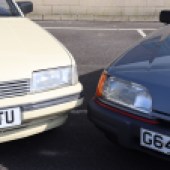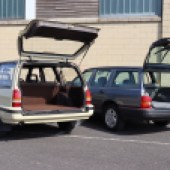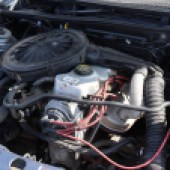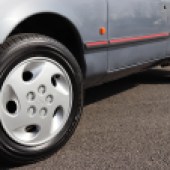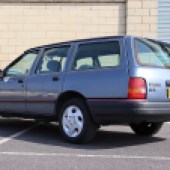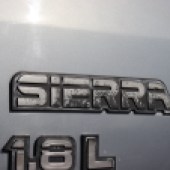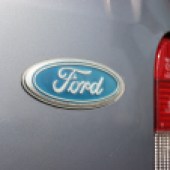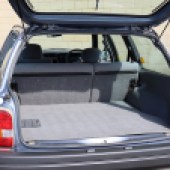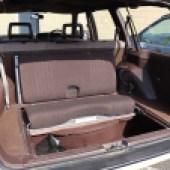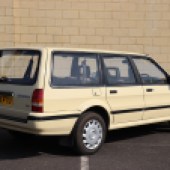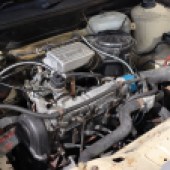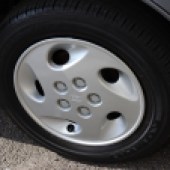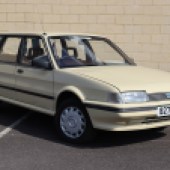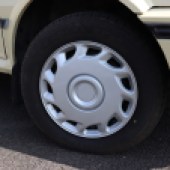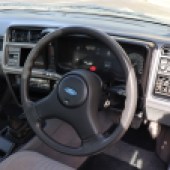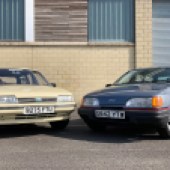1980s estate cars offer a classic experience with comfort and practicality to match. Can the plucky Austin Montego stand up to the might of the Ford Sierra?
Words and images: Joe Miller
The modern solution to the family car is the SUV, but back in the 1980s making a family car was a much simpler, more dignified affair: take one sales-rep saloon, add a box on the back and create an estate car. Most children of the 80s will remember family holidays and being dropped at school in the back of an estate made by Volvo, Vauxhall or even Citroën, but Ford owned the estate car market in much the same way it dominated the saloon sector for sales. Given the popularity of the Mk5 Cortina Estate, it’s no wonder the futuristic Ford Sierra gained a load-lugging variant.
Meanwhile, British Leyland were keen to increase its market share and the Montego was how it planned to do it. The family car market was just as lucrative as the sales rep one and by 1984, estate variants of both these saloon favourites were available.
During the 1960s and 70s, Ford’s all-conquering Cortina had dominated the sales charts in Britain – its familiar Ford badge, combined with the something-for-everyone range of engines and trim levels won hearts. By the 1980s, however, the Mk5 Cortina – itself differing little from the 1970-released Mk3 – was showing its age and Ford decided to ditch conservative familiarity for radical modernity in its replacement.
Christened ‘Sierra’ – the Spanish word for “mountain range” – the new car featured far more curvaceous, futuristic styling than the Cortina. Aerodynamics was Ford’s main selling-point – by cutting through the air over 30 percent more efficiently than the Cortina, the Ford Sierra sported much improved fuel economy from the same engines and far less wind and road noise at speed. Economy and refinement are arguably the two biggest must-haves for the travelling sales rep, so Ford clearly knew its market.
Slippery the body might have been but the Sierra’s styling was initially divisive, with Ford’s typically more conservative customers put off by the futuristic design that had been nicknamed the “jelly-mould” during development. The new look had few fans and when you consider that for the Sierra’s first year in production, last-of-line Mk5 Cortinas were available at heavily-discounted rates, it’s no wonder that the Ford Sierra was initially outsold by its predecessor.
Ford stuck to its guns with the feeling of modernity, however, with a new sweeping dashboard that, in an effort to ape BMW’s cabins, curved towards the driver to give a cockpit-esque feel. To Ford’s credit, it works well with all the instruments clear, controls easy to reach and a commanding view ahead.
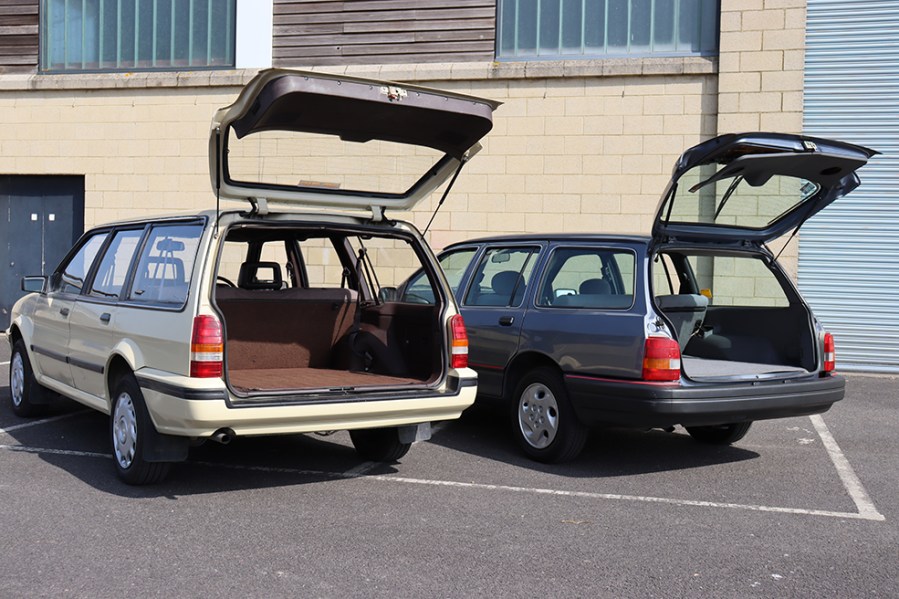
Where the interior and exterior were looking forwards, the mechanicals certainly weren’t – the Ford Sierra launched in 1982 with most of the engines, gearboxes and suspension bits carried over from the Cortina, itself barely changed since the early 1970s. But reheating those leftovers brought two advantages: the mechanicals were durable, tried and tested by fleet users and garages alike, which kept them familiar, and saving development costs on the oily bits meant the new car could launch with a comparable price to that of the outgoing Cortina. Those aging mechanicals were also updated to keep them relevant, a five-speed gearbox was finally offered to improve refinement and fuel economy once again, new carburettors made running smoother and fuel injection was offered on some engines, also improving economy, performance and reliability.
To drive, the Ford Sierra is a mixed bag, feeling fresher than the Cortina in some ways but rather dated in others; the engine – a 1.8 Pinto in our pictured car – feels smooth, pulls eagerly even with the extra bulk of an estate body and knocks the Montego’s grumbly S-Series into a copped hat. The steering is light and fairly numb, but turn-in is surprisingly sharp. However, the suspension can’t hide its age or the bulk of the car and in corners, the Sierra offers considerable body roll and wallows over bumps. In truth, it feels no more modern than the Mk3 Cortina developed in the late 1960s – but remember that in 1.8 Estate guise, the Sierra’s job is to transport a family in comfort rather than win the BTCC. There’s a lot to like – the spongy suspension means a soft, relaxing ride and even today’s hefty speedbumps pose little threat. Combine the cushy ride with the surprising torque of the 1.8 and the five-speed gearbox and the Sierra makes for an excellent mile-munching cruiser.
What’s more, even if you take sizeable bumps at speed, the Ford Sierra remains reassuringly rattle-free. Ford pushed for better quality with this car and while the 52,000-mile example pictured is undoubtedly one of the best remaining survivors, there’s an overall feeling of solidity that Ford sadly lost come the Mk5 Escort era. As family transport, the Sierra works well too, with a sizeable boot and plenty of room for five people. Interestingly, the estate portion of the Sierra body was unchanged throughout the facelifts to the front, but that curved glasshouse in the rear compliments the space-age front rather well. The curved styling for the estate body means the Sierra isn’t as practical as many rivals; you’ll get more luggage into the Montego, and do so easier.
The Sierra was the UK’s second best-selling car by 1983. In every year that followed, it maintained a place in the top 10 and topped it in many cases, it was still the UK’s fifth best-selling car ten years after launch and the Sierra is the tenth best selling car in British history. The Sierra’s comfort, practicality, modernity, value and enormous range of choices ultimately won hearts and even today, there’s a lot to commend it as a daily classic. But if you were shopping for a family wagon in the 1980s, other options were available.
By the early 1980s, times were changing at British Leyland. The Triumph Acclaim was the start of a new era for the company, where Leyland could finally be associated with reliability and quality. Buoyed by that success, BL decided to take on Ford on its home turf, the fleet market. To prove it was serious about leaving the past behind, the Austin Montego, the car aimed at the Ford Sierra, replaced not only the ancient Marina-derived Ital, but also the Princess. Whereas the supposedly futuristic Sierra had stuck with the slightly old-fashioned rear-wheel drive layout, the Montego also sported a transverse engine and more modern front-wheel drive platform.
In anticipation of hot Sierra variants, there was a sporty MG Montego available from launch and to maximise profits from the development costs of the new platform, BL also utilised the Montego’s chassis to create the Maestro hatchback to put Ford’s nose further out of joint by challenging the Escort. Leyland was working smarter and harder with this new car.
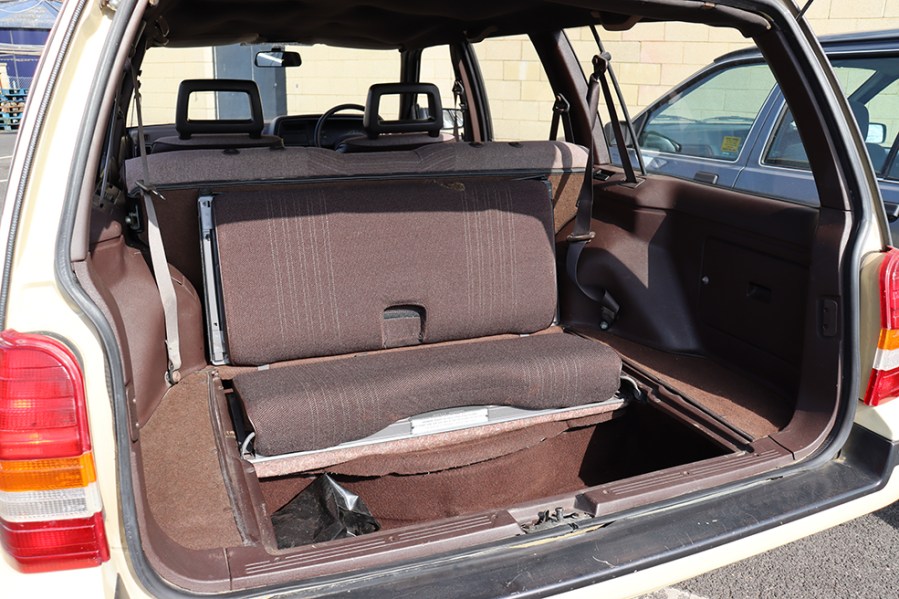
Where Ford’s styling screamed futuristic and radical, the Austin looked modern in more subtle ways – all Montegos had body-coloured bumpers, making the body lines flow more naturally than the black bumpers on the Ford. The Montego was also unusual in parking its wipers beneath the bonnet line so as not to interrupt the car’s waistline. Unfortunately the interior is as laughable as the exterior styling is tidy – the flat dashboard looks ancient next to the swooping Sierra cockpit and the ergonomics are appalling, prioritising the ashtray over the heater controls, placing a blower vent immediately below said ashtray to make blowing ash across the cabin irritatingly likely; meanwhile, the heater controls are obscured by the indicator stalk and the button to send air towards feet and windscreen is so badly placed that it’s out of view unless you put some left-hand steering lock on. Unlike the Sierra, the quality isn’t great either, with rattles, squeaks and cracked dashboards common when these cars were nearly new, let alone some 35 years on.
But while the interior design leaves a lot to be desired, the estate variant of the Montego certainly doesn’t – it features a low, flat floor that offers easier access to more luggage than in the Sierra, the two extra jump seats that turn the Montego into a seven-seater – a feature Ford never offered – folding into the boot floor when not in use, so as not to encroach into the boot space. Some models even offered self-levelling rear suspension. So well-accomplished was the Montego estate that it won a Design Council award, in recognition of “great design that improves lives and makes things better” and in my opinion, the Montego is an excellent example of a car looking better as an estate than as a saloon.
To drive, the Montego definitely feels tighter than the Ford, with weighty and direct steering, an eager turn-in and body roll that, while still considerable, is more controlled than the Sierra. The Austin feels lighter on its feet and if you’re prepared to work the 1.6 S-Series for every one of its 85bhp; it’s good fun to throw down a flowing B-road. Where the Ford is happier cruising and offers the comfier ride, the Montego feels eager and encourages you to get involved.
Soft, long-travel suspension and forgiving seats mean the Montego is also a comfortable car, soaking up bumps in a way modern cars just don’t and managing it without the pitching and wallowing of the Sierra. The only fly in the ointment is the gearchange, a rubbery, vague shift that requires a definite shove and the occasional glance down to check you’re in gear. It might seem odd to criticise the shift feel on a family estate, but in lower-powered Montegos, you’ll be working the gearbox to keep the car moving, so you notice how unpleasant that change is.
British Leyland’s old stumbling blocks came back to haunt it and the Montego suffered with numerous quality and reliability issues in early years – everything from bumpers cracking in hotter countries to carburettor issues, trim falling off and leaving Motor magazine writers stranded in their long-term car on two separate occasions. By the time the Montego quality had improved sufficiently and the Perkins diesel variant was introduced to offer remarkable fuel economy, Ford’s Sierra has asserted market dominance and poor old BL had lost. The Montego’s reputation for poor quality never truly left it and like many British Leyland cars, by the end of its life the Montego had evolved into the car it always should have been from the start.
Austin shifted 436,000 Montegos, an impressive figure until you learn that Ford sold 1.3 million examples of the Sierra. But the numbers tell only half the story – the Montego remained an extremely well-rounded family estate and arguably offered a more complete package than the Sierra. It soldiered on until 1995, two years after the Ford Sierra had been replaced. As a WhatCar? report said in 1995, the Montego matured into a thoroughly decent car, but nobody noticed.
Ford Sierra vs Austin Montego: our verdict
This isn’t our most exciting twin test, but unlike classics better used sparingly during summer months and garaged for winter, either of this pair can easily serve as your daily driver. Both will comfortably accommodate five people – seven in the Montego’s case – achieve well over 30mpg and keep up with motorway traffic with ease, all the while providing excellent ride comfort and more luggage capacity than all but the largest of modern SUVs. Get it undersealed and a Montego or Sierra estate can serve your everyday needs with aplomb; attach a tow bar and you can even pull a caravan.
As for which is best, it’s a closer-run competition than you might think – the Ford’s far superior quality, more modern interior, better parts support and more availability of cars at any given time means that for daily driver purposes, the Sierra is the better choice. The jelly-mould styling looks better now than it ever has and owning a Sierra gets you into an enormous owner’s community and countless events, including our own Classic Ford Show.
But for some the Sierra will be too obvious, for others the wallowy handling or strict five-seater accommodation might be deal-breakers; for those people, the Montego is the better choice – it offers a better ride/handling compromise than the Ford and with lfewer than 100 still on the road, it’s far rarer. If practicality is your top priority, the Austin does it best. There are quality compromises to make throughout and we doubt finding parts – new or used – is as easy as with the Ford, but these are classic cars now and owning any near-extinct model comes with its challenges.


